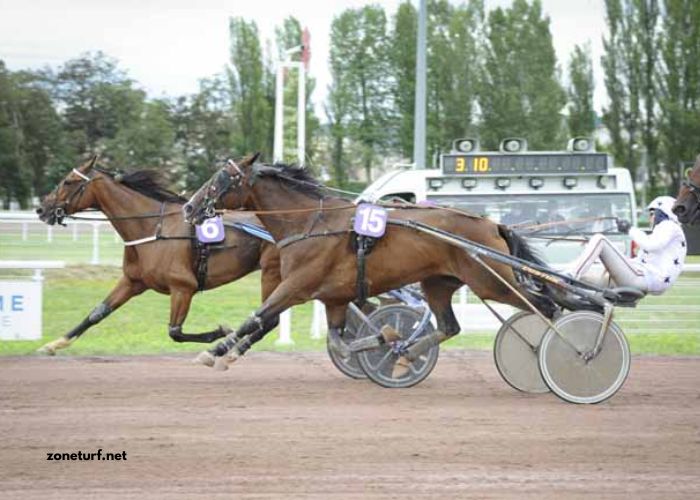In the intricate world of turf betting, where every race presents a challenge of selecting the right contenders, understanding the concept of “Elimination des Chevaux” (Elimination of Horses) becomes crucial. This strategy involves the process of systematically narrowing down the field of competitors to identify horses that are less likely to perform well in a race. Mastering this approach requires a blend of analysis, experience, and a deep understanding of various factors influencing race outcomes.
What is “Elimination des Chevaux”?
“Elimination des Chevaux” refers to the strategic process of eliminating horses from consideration as potential bets based on various criteria. This strategy is employed by seasoned bettors and turf analysts to streamline their selections and focus on horses with higher perceived chances of winning or placing in a race. The goal is to reduce the risk of betting on horses that are deemed less competitive based on current form, past performances, and other relevant factors.
Factors Considered in Elimination
- Recent Form: The recent performances of horses in previous races are a critical factor in elimination. Horses that have consistently underperformed or shown signs of decline in form may be eliminated from consideration.
- Track Conditions: The condition of the turf or track can significantly impact a horse’s performance. Some horses excel on firm ground, while others may perform better on softer surfaces. Understanding how track conditions affect different horses helps in making informed elimination decisions.
- Jockey and Trainer Performance: The expertise and track record of the jockey and trainer also play a role. Horses ridden by experienced jockeys with a history of success at the track may be less likely to be eliminated compared to those with less proven partnerships.
- Distance and Race Type: Each horse has a preferred distance and race type where they perform best. Elimination involves considering whether a horse has shown competitiveness in similar conditions to the upcoming race.
- Health and Fitness: The physical condition of the horse, including any recent injuries or health concerns, can impact its ability to perform optimally. Horses that are not in peak physical condition may be candidates for elimination.
Strategies for Implementing Elimination
- Form Analysis: Reviewing recent race performances and analyzing trends in a horse’s form can help identify patterns of success or decline. Eliminate horses that consistently show poor form or inconsistency.
- Track and Distance Suitability: Assessing how well a horse has performed at the specific track and distance of the upcoming race provides insights into its suitability. Eliminate horses that have struggled under similar conditions in the past.
- Comparative Analysis: Comparing the current field of competitors based on their strengths and weaknesses relative to each other can aid in elimination. Focus on horses that have demonstrated competitive advantages over others in similar races.
- Market Trends: Monitoring betting markets and understanding which horses are favored by the public versus those receiving less attention can inform elimination decisions. Contrarian approaches may involve eliminating overly popular choices.
Benefits of Using “Elimination des Chevaux”
- Risk Management: By systematically eliminating horses that are less likely to perform well, bettors can reduce their exposure to risk. This strategy helps in focusing resources and bets on horses with higher perceived chances of success.
- Enhanced Decision-Making: Elimination of horses based on comprehensive analysis enhances decision-making clarity. Bettors can approach races with a more structured and informed strategy, leading to potentially better outcomes.
- Improvement in Betting Efficiency: Implementing “Elimination des Chevaux” saves time and effort by narrowing down the field of contenders. Bettors can concentrate on conducting deeper analysis and selecting bets that align with their strategic criteria.
Practical Applications and Case Studies
To illustrate the effectiveness of “Elimination des Chevaux,” consider the following scenarios.
- Scenario 1: Before a major turf event, a bettor eliminates horses with a history of poor performance on soft ground due to anticipated rain. This strategy focuses their bets on horses known to excel in similar conditions, maximizing potential returns.
- Scenario 2: A turf analyst uses elimination based on recent form and jockey-trainer partnerships to refine their selections. This approach leads to consistently profitable outcomes over a series of races, demonstrating the value of strategic elimination.
Conclusion
“Elimination des Chevaux” represents a strategic approach in turf betting aimed at reducing risk and improving decision-making efficiency. By systematically eliminating horses based on comprehensive analysis of form, track conditions, and other relevant factors, bettors can enhance their chances of selecting winning bets.
Mastering the art of elimination requires a combination of experience, analytical skills, and a deep understanding of the nuances of horse racing. Whether you’re a novice exploring advanced betting strategies or a seasoned bettor looking to refine your approach, incorporating “Elimination des Chevaux” into your toolkit can lead to more informed and profitable betting experiences.
Remember, in turf betting, informed decisions based on thorough analysis and strategic thinking can tilt the odds in your favor. By embracing “Elimination des Chevaux,” you can navigate the complexities of horse racing with confidence and precision, aiming for sustained success on the racecourse.



